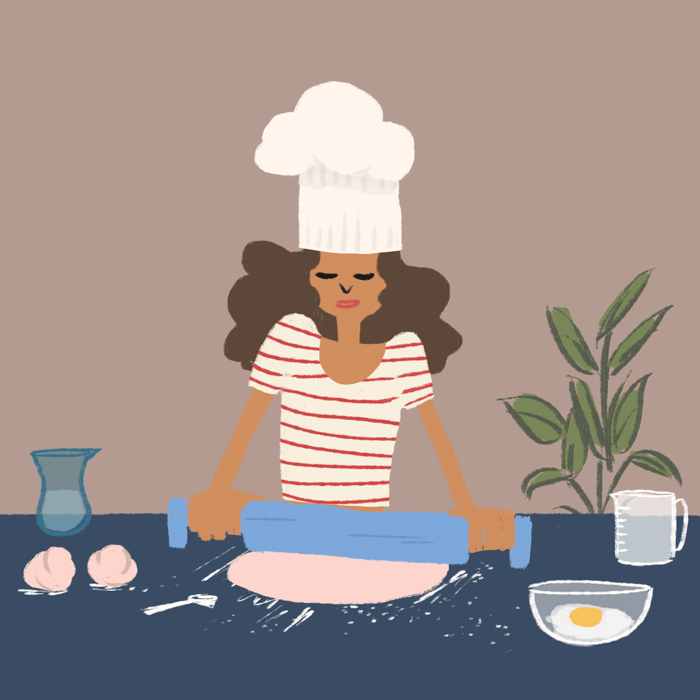Baking Blueberry Bread with Betsy Bloom
by: Katie Clark
Rationale: The lesson will assist students in identifying /b/ which is represented by the phoneme B. My students will learn how to recognize /b/ by visual representations and using a tongue twister. Students will also be able to identify the letter symbol B, practice with words beginning in the letter B, and they will be able to apply their phoneme awareness with /b/ in phonetic cue reading.
Materials: Primary Paper, Pencil, Chart with “Betsy Bloom bakes the Blueberry Bread batter”, Crayons or Markers, drawing paper, “I Like Bugs (Margaret Wise Brown, Random House, 1999), Word cards with the words BUG, BAKE, BIG, PLAY, BALL, and BLUE, Assessment Worksheet: Identifying picture with /b/
Procedures:
-
Say: Our written language is a secret code. It tends to be confusing when learning what letters stand for. We learn how the mouth moves to make each sound. Today we are going to work on my favorite letter in the alphabet, b and we are going to focus on recognizing the letter b in words and also how it makes a /b/ sound. The letter /b/ sounds like a beating drum, and the letter b looks like a drumstick we use to beat the drum.
-
Now let’s pretend to beat our drum, /b/ /b/ /b/. (Pantomime beating a drum) What is our mouth doing when we are beating our drum? Notice how our lips push together and then blow air out with our voice box /b/ /b/, why don’t you try? (joins in on making /b/ sounds).
-
Now let me show you how to find the /b/ sound in the word bird. I am going to say the word in slow motion and I want you to listen for our beating drum sound, what sound is that again? (Wait for the student to say /b/). B-i-r-r-d-d. Slower: B-b-i-i-i-r-r-r-d-d. There it was! I felt my lips push together and then blow out air. I can feel the beating drum /b/ in bird.
-
Now we are going to try a tongue twister (Take out chart). “Baking Blueberry Bread with Betsy Bloom”. Now let’s say it three times together. Now say it, but this time stretch out the /b/ at the beginning of each word. Ready? “Bbbaking Bbblueberry Bbbread with Bbbetsy Bbbloom.” Now let’s say it one more time but this time break it off the word, ”/b/aking /b/lue/b/erry /b/read with /b/etsy /b/loom.”
-
(Have students take out primary paper and pencil). We use letter B to spell /b/. Lower case b looks like the drumstick we have used to beat our drum, now let’s write it. Let’s start at the roof top, and draw a line straight down to the sidewalk. Then let’s go back to the fence and draw a hump down to the sidewalk. Ok let me see everyone’s b. Now let’s write a capitol b. Start at the rooftop again and draw a line down to the sidewalk. Then go back up to the rooftop and loop down to the fence and stop and then make another loop down to the sidewalk. Ok now let me see everyone’s capitol B. After I put a sticker on both of your b’s I want you to make four more of each just like it.
-
Ok now I am going to call on a few students to answer which word they hear the /b/ sound in. Do you hear /b/ in cat or ball? Top or bottom? Bug or grasshopper? “Now let’s see if you can spot the mouth move of /b/ in some words. Bang your drum if you hear /b/: shorts, bat, bus, drive, car, banana
-
Now let’s look at the book “I like bugs.” Book talk: “Some kids are scared of bugs but some kids love bugs. Does anyone have a favorite kind of bug?”— “Well if you don’t have a favorite bug yet you will have one after we read this book, what kind of bugs do you think we are going to learn about?” After we have read our book we will read it again and look for the /b/ sound. Tell the students before you reread, “Every time we hear the /b/ sound lets bang our drums.” (When you are done rereading the book ask the students to take out drawing paper and crayons/markers). “Now that we have finished our book and are really good at finding our /b/ sounds, write a word or a sentence with the /b/ sound and draw a picture of it.” Display the students work so that you can reference it in the future.
-
Show the word BUG and show how to decide if it is rug or bug. The b tells me to bang on my drum, /b/, so this word it bbb-ug. You try some BALL: fall or ball, BAKE: make or bake, and BUG: rug or bug?
-
For assessment, distribute the worksheet. Let the students say the name of the picture and color in the pictures using their markers/crayons. Then have them use the letter outlines to write the letters.
References:
Assessment Worksheet: http://www.kidzone.ws/prek_wrksht/learning-letters/b.gif
Brown, Margaret Wise. I Like Bugs. New York: Random House, 1999.
Haley Felkins. Bob Bounced the bad Basketball down the Basketball Court.
https://haleyfelk1.wixsite.com/lessondesigns/emergent-literacy-design
http://www.auburn.edu/academic/education/reading_genie/horizons.html




